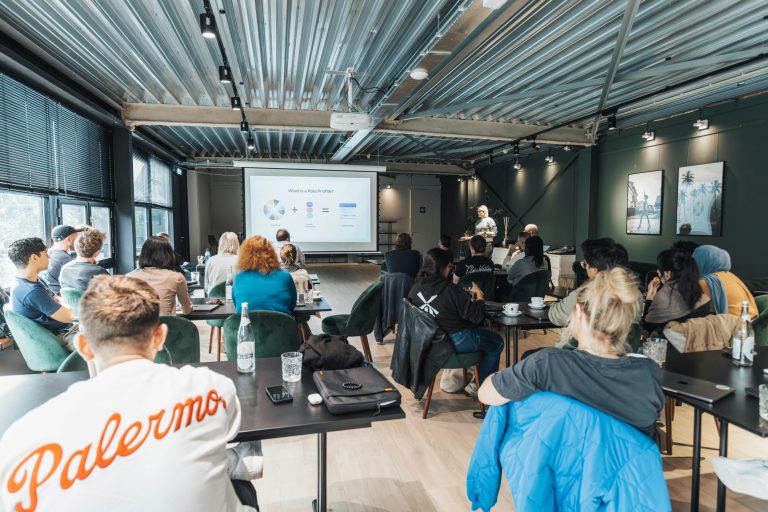Introduction
Artificial Intelligence (AI) is rapidly transforming the way organizations operate. However, AI adoption is not a one-size-fits-all journey. To implement AI successfully, leaders must understand how AI integrates into workflows, augments decision-making, and evolves within business processes.
This article explores six leading AI usage frameworks that provide structured approaches to integrating AI into your organization. These frameworks will help you evaluate where your organization stands and how to strategically implement AI to drive efficiency, productivity, and innovation.
1. Microsoft’s AI Maturity Model
Microsoft’s AI Maturity Model outlines the stages of AI adoption and how human involvement shifts over time. It defines AI progression as follows:
- Assisted Intelligence: AI provides insights and recommendations, but humans make decisions.
- Augmented Intelligence: AI enhances human decision-making and creativity, working alongside people.
- Autonomous Intelligence: AI operates independently, making decisions without human intervention.
This model helps businesses assess their AI maturity level and plan for gradual AI integration.
2. PwC’s AI Augmentation Spectrum
PwC’s AI Augmentation Spectrum categorizes AI’s role based on autonomy and complexity. It includes six stages:
- AI as an Advisor: Provides insights and recommendations to aid decision-making.
- AI as an Assistant: Helps humans perform tasks more efficiently.
- AI as a Co-Creator: Works collaboratively with humans on creative and strategic tasks.
- AI as an Executor: Performs tasks with minimal human input.
- AI as a Decision-Maker: Makes decisions independently.
- AI as a Self-Learner: Learns from experience to improve over time.
This framework is particularly useful for organizations defining AI’s role in human-centric workflows.
3. Deloitte’s Augmented Intelligence Framework
Deloitte’s framework emphasizes the collaboration between AI and humans, focusing on three key areas:
- Automate: AI takes over repetitive, rule-based tasks, reducing manual workload.
- Augment: AI provides recommendations and insights to improve human decision-making.
- Amplify: AI helps humans scale their work by improving productivity and decision speed.
By balancing automation and augmentation, organizations can leverage AI while maintaining human oversight.
4. Gartner’s Autonomous Systems Framework
Gartner’s framework classifies work based on the degree of human and AI involvement:
- Manual Work: Fully human-driven tasks.
- Assisted Work: Humans complete tasks with AI support.
- Semi-Autonomous Work: AI handles tasks but allows human intervention as needed.
- Fully Autonomous Work: AI performs tasks independently, requiring no human input.
This model helps organizations determine which tasks are best suited for AI automation.
5. MIT’s Human-in-the-Loop (HITL) AI Model
MIT’s Human-in-the-Loop (HITL) model ensures that humans remain integral to AI processes, particularly for tasks requiring judgment, ethics, and creativity.
- AI Automation: Tasks that AI can handle independently.
- Human-in-the-Loop: Tasks where humans oversee AI decisions or review AI-generated outputs.
- Human Override: Tasks where humans have the ability to override AI decisions in sensitive areas.
This framework is crucial for businesses adopting AI in regulated industries or decision-sensitive areas.
6. Harvard Business Review’s Human-AI Teaming Model
HBR’s Human-AI Teaming Model highlights AI’s role in augmenting human work, rather than replacing it. The framework defines three modes of AI collaboration:
- AI as a Tool: AI supports decision-making by providing data-driven insights.
- AI as a Collaborator: AI shares tasks with humans to enhance productivity.
- AI as a Manager: AI takes over specific management functions, such as scheduling and performance monitoring.
This model is valuable for organizations looking to enhance AI-human collaboration without full automation.
Conclusion
AI adoption is progressing rapidly, but its use cases often lag behind its technological advancements. These six AI frameworks offer structured approaches to understanding AI’s potential and integrating it strategically within organizations. By leveraging these models, businesses can develop a robust AI adoption plan that balances automation, augmentation, and human oversight.
Next Steps:
- Assess your organization’s current AI maturity level.
- Identify key business areas where AI can provide value.
- Select an AI usage framework that aligns with your strategic goals.
- Develop a roadmap for AI adoption, ensuring human involvement where necessary.
By taking a structured approach, organizations can maximize AI’s benefits while mitigating risks.
What are your thoughts on these AI frameworks? Share your experiences and insights below!
#AI #Strategy #Transformation










